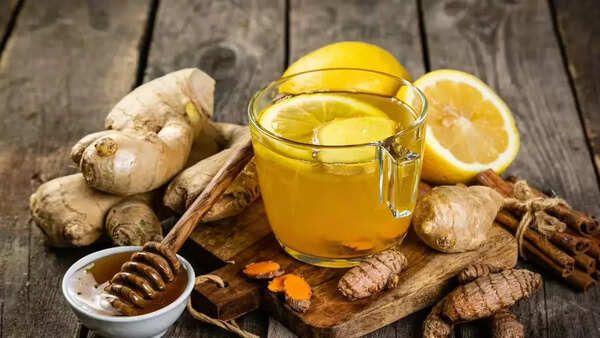Menstrual cramps can significantly disrupt daily life, causing pain and exhaustion. While traditional remedies like hot water bags and over-the-counter pain relievers offer temporary relief, they aren't always sufficient for long-term management. For centuries, women have turned to herbal teas for relief. Here are five ancient herbal teas known for their potential to ease menstrual pain.


Brew a cup of red raspberry leaf tea to potentially alleviate menstrual cramps. This tea is derived from the leaves of raspberry plants and possesses a mild flavor reminiscent of black tea. These leaves contain fragarine, a compound believed to strengthen pelvic muscles and reduce uterine spasms, offering significant relief from menstrual pain. Preparation involves steeping 1–2 teaspoons of dried leaves in hot water for approximately 10 minutes.

Chamomile tea, a renowned beverage used in ancient Egypt and Rome for its calming properties, remains a popular choice for menstrual relief. Its anti-inflammatory and antispasmodic compounds, including apigenin, aid in relaxing muscles and reducing cramping. While chamomile tea may not directly target menstrual cramps, it can improve sleep quality and reduce fatigue, complemented by antioxidants that may help reduce inflammation.

Peppermint tea has historical roots dating back to ancient Greece, where it was used to alleviate menstrual cramps. Containing menthol, a natural muscle relaxant, this cooling compound can soothe uterine contractions and ease cramps. A 2019 study highlighted menthol's ability to smooth muscle spasms, potentially reducing painful stomach cramps. Preparing this tea involves steeping 1 teaspoon of dried peppermint leaves in hot water for 5–10 minutes. Beyond pain relief, drinking peppermint tea can also improve digestion and reduce bloating.

Cinnamon tea can satisfy sweet cravings while potentially easing pain. Its naturally sweet and spicy flavor creates a comforting and relaxing drink. A staple in ancient Chinese and Ayurvedic medicine, cinnamon boasts anti-inflammatory and circulation-boosting properties. These properties help reduce menstrual pain by improving blood flow and relaxing uterine muscles. A 2020 study indicated that cinnamon supplementation can reduce inflammation and oxidative stress levels. However, moderation is key to avoid overstimulation.

Ginger tea, a reliable remedy, has been used in Asian and Indian healing practices for its potent anti-inflammatory properties. This spicy root contains gingerol, an active compound that may reduce prostaglandin levels, which trigger menstrual cramps. A 2015 study revealed that women who consumed 750-2000 mg of ginger powder during the first 3-4 days of their period experienced reduced period pain.
Disclaimer: This article is for informational purposes only and does not substitute professional medical advice, diagnosis, or treatment. Consult a healthcare provider before starting any new dietary or herbal remedy, especially if pregnant, nursing, taking medications, or with existing health conditions.
Newer articles
Older articles
 Evil Eye Amulet: Protective Charm or Portal to Dark Forces? A Cultural Debate
Evil Eye Amulet: Protective Charm or Portal to Dark Forces? A Cultural Debate
 Jayden Seales Fined by ICC for Provocative Gesture During Australia Test Match
Jayden Seales Fined by ICC for Provocative Gesture During Australia Test Match
 Paralympic Archer Sheetal Devi's Viral Video Shows Her Driving Car with Feet, Defying Expectations
Paralympic Archer Sheetal Devi's Viral Video Shows Her Driving Car with Feet, Defying Expectations
 Broad Slams India's Team Selection After Headingley Test Loss, Calls for Roster Tweaks at Edgbaston
Broad Slams India's Team Selection After Headingley Test Loss, Calls for Roster Tweaks at Edgbaston
 Umpire Controversy Erupts: West Indies Coach Sammy Questions Holdstock's Consistency in Barbados Test
Umpire Controversy Erupts: West Indies Coach Sammy Questions Holdstock's Consistency in Barbados Test
 Sachin Tendulkar: 1983 World Cup Win Sparked My Cricket Dream at Age 10
Sachin Tendulkar: 1983 World Cup Win Sparked My Cricket Dream at Age 10
 Jaiswal's Fielding Woes: Ex-India Star Kaif Points to Potential Cause for Dropped Catches in England Test
Jaiswal's Fielding Woes: Ex-India Star Kaif Points to Potential Cause for Dropped Catches in England Test
 Team India's England Tour: Rahul's Sleep Strategy, Coaching Rituals, and Coffee Culture Revealed
Team India's England Tour: Rahul's Sleep Strategy, Coaching Rituals, and Coffee Culture Revealed
 Suryakumar Yadav Successfully Completes Sports Hernia Surgery, Eyes Return to Cricket
Suryakumar Yadav Successfully Completes Sports Hernia Surgery, Eyes Return to Cricket
 Gujarat Cricket Set to Launch T20 League in 2025-26 Season
Gujarat Cricket Set to Launch T20 League in 2025-26 Season